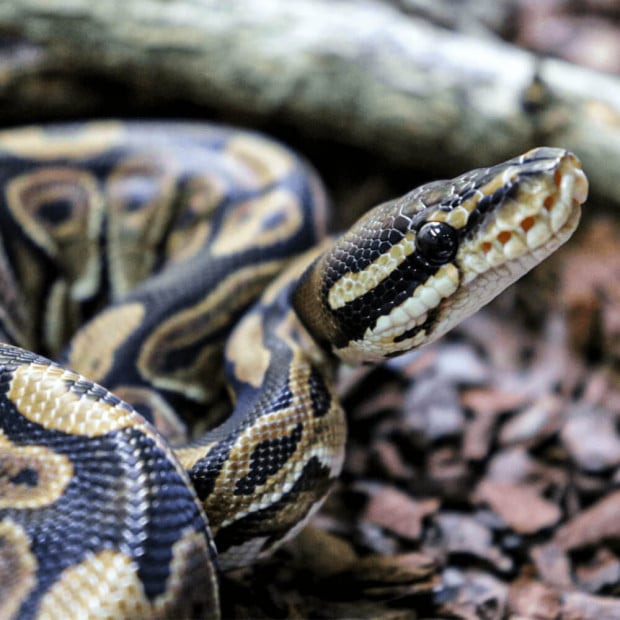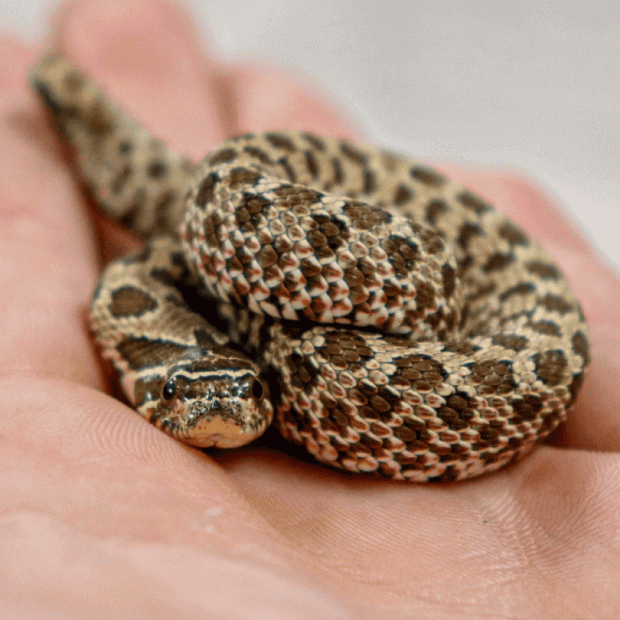Kenyan sand boa, Gongylophis colubrinus
Kenyan sand boas are adorable, docile and suitable for beginners

- Kenyan sand boas are a compact and adorable snake
- Docile temperaments although can be skittish when young
- Easy care requirements make them suitable for beginners
Do Kenyan sand boas make good pets?
Kenyan sand boas are a small, stout species of snake that inhabits quite a large area of Africa including Kenya, as the name suggests. They are very unique looking ambush predators, often waiting burrowed with only their heads exposed.
Most sand boas are characterised by a deep red to orange color pattern, a stout body and a flat, small head with small eyes on the top, an adaptation that suits their burrowing behaviours whilst making them extremely cute to look at.
Kenyan sand boas have a generally docile nature and tame down very easily, this, along with their small size makes them very popular pet snakes and an excellent choice for beginner hobbyists.
At Swell Reptiles all of our Kenyan sand boas are captive bred in the UK, meaning they will be free of parasites and diseases, whilst causing minimal negative impacts on their native environment.
What size vivarium does a Kenyan sand boa need?
Due to their smaller size, an adult Kenyan sand boa can live quite happily in a vivarium around 90 x 60 x 60cm (3 x 2 x 2ft), such as a wooden vivarium, although if you can provide a larger enclosure, this will certainly be beneficial. A smaller enclosure can be used for a baby Sand boa, although this would need upgrading eventually, adding to overall costs.
Wooden vivariums generally work best as they hold the heat better, but glass enclosures such as the Exo Terra Glass Terrarium 90x45x45cm can also work.
Do Kenyan sand boas need to be heated?
Just like other reptiles, Kenyan sand boas cannot control their own body temperature, so their captive environment should provide them with both warm and cool areas to allow them to do this. The temperature gradient should run from one end of the enclosure to the other, with the warm end being around 35°C (95°F) and the cool end being between 22-25°C (71-77°F).
Due to their burrowing nature, heat mats should not be used for Kenyan sand boas. Rather their heating should come from above, using either a basking lamp or ceramic heater hooked up to the relevant thermostat (dimming thermostat for basking lamps, pulse thermostat for ceramic heaters).
Do Kenyan sand boas need UV?
Your Kenyan sand boa will benefit significantly from a UVI between 2-3, which is most easily achieved using an Arcadia ShadeDweller Max positioned 25-40cm (10-15”) above the basking area. If your light fixture will need to be higher, but no higher than 45cm (18”), then an Arcadia ProT5 Kit - Forest 6% will be better.
What substrate should I use for my Kenyan sand boa?
Kenyan sand boas should be provided with a deep layer of loose, sandy substrate, or sand-soil mixes that will allow them to burrow, without holding moisture or raising the overall humidity within the enclosure. The best substrate examples for this are Lucky Reptile Desert Bedding, or Arcadia EarthMix Arid which is particularly good for live-planted enclosures.
How do I decorate a Kenyan sand boa’s vivarium?
Your Kenyan sand boas enclosure should be kitted out with lots of furniture to provide enrichment, such as branches, logs, cork bark pieces and foliage either from real or artificial plants. At least two hiding areas should also be provided using either reptile caves, or tactically placed pieces of natural decor to provide a safe space so that they can feel secure at either end of the thermogradient.
What do Kenyan sand boas eat?
Kenyan sand boas are carnivorous and naturally predate on rodents, lizards, frogs, birds and other snakes. In captivity, Kenyan sand boas do best fed on a diet of reptile frozen food. Rats can be offered, although they are much higher in protein and being quite a small snake, this can lead to obesity if fed too often, so it is best to keep rats for occasional feedings to add some variety.
How do I buy a Kenyan sand boa?
All of our livestock is for in-store collection only, so if you like the look of our UK captive bred Kenyan sand boas and would like to take one home, please come in and see us.
To ensure that all animals passing through Swell Reptiles go to the best homes possible, we will ask you a few quick questions and ask to see some images of your set-up, which should be completely ready for the Kenyan sand boa to go into. We reserve the right to refuse adoption to anyone we feel is unprepared to adopt.
If you would like to check out some alternatives to the Kenyan sand boa, you can take a look at our Western hognose snake care guide.
| Common names | Kenyan sand boa, Egyptian sand boa, East African sand boa |
| Scientific name | Gongylophis colubrinus |
| Country | Africa |
| Captive-bred | Yes |
| Adult size | 60cm (2ft) |
| Natural habitat | Savannah scrublands, desert margins and arid habitats |
| Housing | 90 x 60 x 60cm (3 x 2 x 2ft) |
| Ideal temperature | 35°C (95°F) (warm end); 22-25°C (71-77°F) (cool end) |
| UVI | 2-3 |
| Ideal humidity | 40% |
| Diet | Carnivorous |
| Average lifespan | 15-20 years |
| Personality | Docile, youngsters can be defensive or skittish |
| Ease of handling | Easy |
| Cohabitable | No |
-
 Royal python, Python regiusFrom £130.00In stock
Royal python, Python regiusFrom £130.00In stock -
 Western hognose snake, Heterodon nasicusFrom £175.00In stock
Western hognose snake, Heterodon nasicusFrom £175.00In stock



